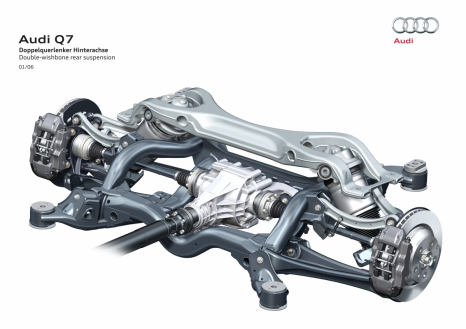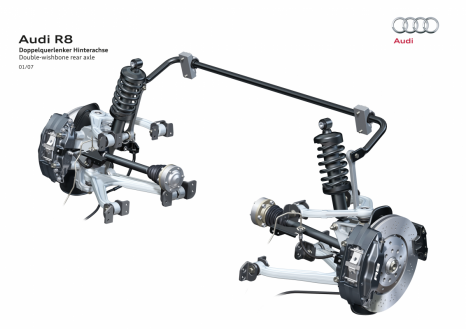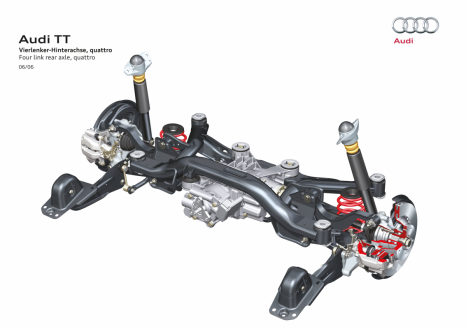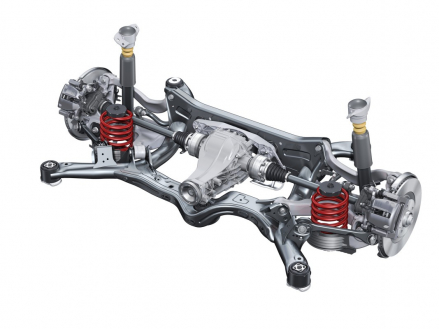Rear suspension
Guidance, self-steering, suspension – the rear suspension performs important functions in every car. Audi uses four different basic designs in its model range.
The compact A1 (Combined fuel consumption in l/100 km: 7.1 – 3.8; Combined CO2-emissions in g/km: 162 - 99)** with front-wheel drive features a semi-independent rear suspension. The wheels are guided by two longitudinal links joined together by a cross-member. Semi-independent rear suspension is compact and saves space.
The A3, the Q3 (Combined fuel consumption in l/100 km: 8.8 – 5.2; Combined CO2-emissions in g/km: 206 - 137)** and TT use a sophisticated four-link rear suspension. The longitudinal link absorbs the driveline and braking forces, and its relatively soft mount permits good ride comfort. On the other hand, the three wishbones per wheel – the spring link, the upper wishbone and the tie rod – are rigidly attached to the subframe and thus conduct lateral forces into the body. All links are made from high-strength steel.
From the A4 onward, the Sedan, Avant, Cabriolet and Coupé models make use of a special Audi design – the self-tracking trapezoidal-link suspension at the rear. Combining a compact design with excellent comfort and driving qualities, its backbone is a subframe made from high-strength steel. Its connection to the body – by means of hydraulic bearings in the full-size models – makes a significant contribution to the superior handling and comfort qualities. The unsprung masses remain low at the wheel control arms. The two trapezoidal links are cast from warm-hardened aluminum. The transverse links on top and the track rods are aluminum forgings, and the wheel carriers are produced in an aluminum chill-casting process.
The Q7 (Combined fuel consumption in l/100 km: 10.7 – 7.2; Combined CO2-emissions in g/km: 249 - 189)** and the R8 take a different path. In this case, both the front and rear suspension comprise double wishbones made either entirely or partially from aluminum. The basic concept of both suspensions is similar. The design is voluminous and robust in the full-size SUV, but extremely trim in the high-performance sports car. In both cases, however, the layout with the two wishbones enables high-precision handling.
**Figures depend on the tires/wheels used.
Status: 2011



